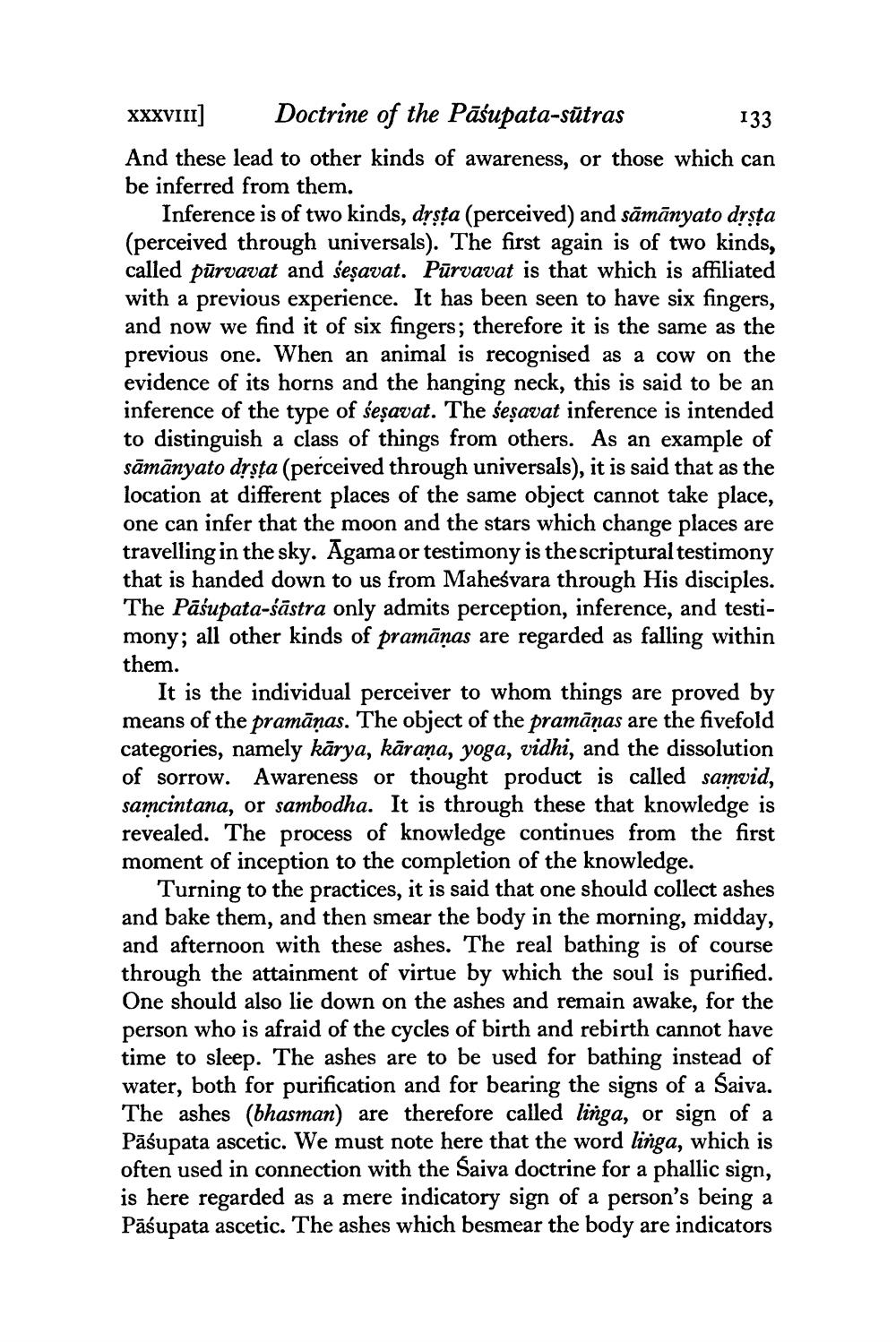________________
XXXVIII] Doctrine of the Pāśupata-sūtras
133 And these lead to other kinds of awareness, or those which can be inferred from them.
Inference is of two kinds, drșța (perceived) and sāmānyato drsta (perceived through universals). The first again is of two kinds, called pūrvavat and seșavat. Pūrvavat is that which is affiliated with a previous experience. It has been seen to have six fingers, and now we find it of six fingers; therefore it is the same as the previous one. When an animal is recognised as a cow on the evidence of its horns and the hanging neck, this is said to be an inference of the type of sesavat. The sesavat inference is intended to distinguish a class of things from others. As an example of sāmānyato drsta (perceived through universals), it is said that as the location at different places of the same object cannot take place, one can infer that the moon and the stars which change places are travelling in the sky. Agama or testimony is the scriptural testimony that is handed down to us from Maheśvara through His disciples. The Pāśupata-śāstra only admits perception, inference, and testimony; all other kinds of pramānas are regarded as falling within them.
It is the individual perceiver to whom things are proved by means of the pramāņas. The object of the pramāņas are the fivefold categories, namely kārya, kāraña, yoga, vidhi, and the dissolution of sorrow. Awareness or thought product is called samvid, samcintana, or sambodha. It is through these that knowledge is revealed. The process of knowledge continues from the first moment of inception to the completion of the knowledge.
Turning to the practices, it is said that one should collect ashes and bake them, and then smear the body in the morning, midday, and afternoon with these ashes. The real bathing is of course through the attainment of virtue by which the soul is purified. One should also lie down on the ashes and remain awake, for the person who is afraid of the cycles of birth and rebirth cannot have time to sleep. The ashes are to be used for bathing instead of water, both for purification and for bearing the signs of a Saiva. The ashes (bhasman) are therefore called linga, or sign of a Pāśupata ascetic. We must note here that the word linga, which is often used in connection with the Saiva doctrine for a phallic sign, is here regarded as a mere indicatory sign of a person's being a Pāśupata ascetic. The ashes which besmear the body are indicators




